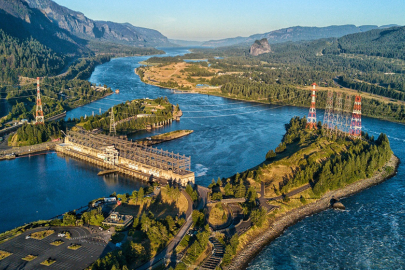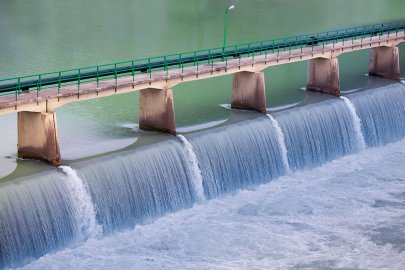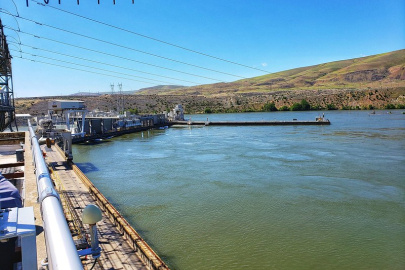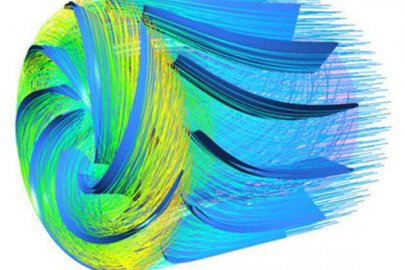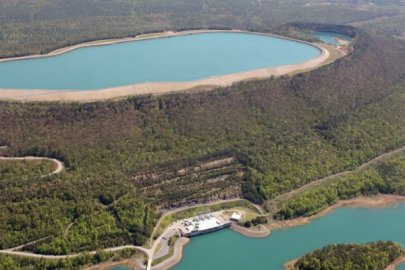Rapid changes in the U.S. electricity system have created new needs for grid services that hydropower and PSH are well-suited to provide.
Water Power Technologies Office
January 13, 2021Launched in April 2019, the HydroWIRES (Water Innovation for a Resilient Electricity System) Initiative is designed to understand, enable, and improve hydropower and PSH’s contributions to reliability, resilience, and integration in the rapidly evolving U.S. electricity system. The unique characteristics of hydropower, including PSH, make it well-suited to provide a range of storage, generation flexibility, and other grid services and support the cost-effective integration of variable renewable resources. Specific research areas in HydroWIRES are motivated by pressing industry challenges and have been developed with external input from the hydropower industry and power system stakeholders. The HydroWIRES Initiative represents a significantly increased and targeted focus for WPTO on hydropower’s changing role in the power system.
Though HydroWIRES only formed in 2019, the initiative builds on and integrates previous work funded by WPTO. The 2016 Hydropower Vision report illustrated challenges and opportunities associated with expansion of the hydropower fleet but also highlighted research gaps in understanding the past, present, and future value of hydropower. Such questions motivated two flagship projects in what later became the foundational efforts for the HydroWIRES Initiative: the Hydropower Value Study: Current Status and Future Opportunities (HVS), which describes the current operational landscape of the hydropower fleet, and a techno-economic guidebook, which provides an assessment of two proposed PSH projects to evaluate their long-term valuation and refine national lab–developed valuation guidance. A draft valuation methodology and tool has been applied to the two proposed sites that were competitively selected through a 2017 Notice of Opportunity for Technical Assistance (NOTA—the Banner Mountain site in Wyoming and the Goldendale site on the Oregon and Washington border. An early report published as part of this effort is the “Energy Storage Technology and Cost Characterization Report,” which compares PSH with other storage technologies.
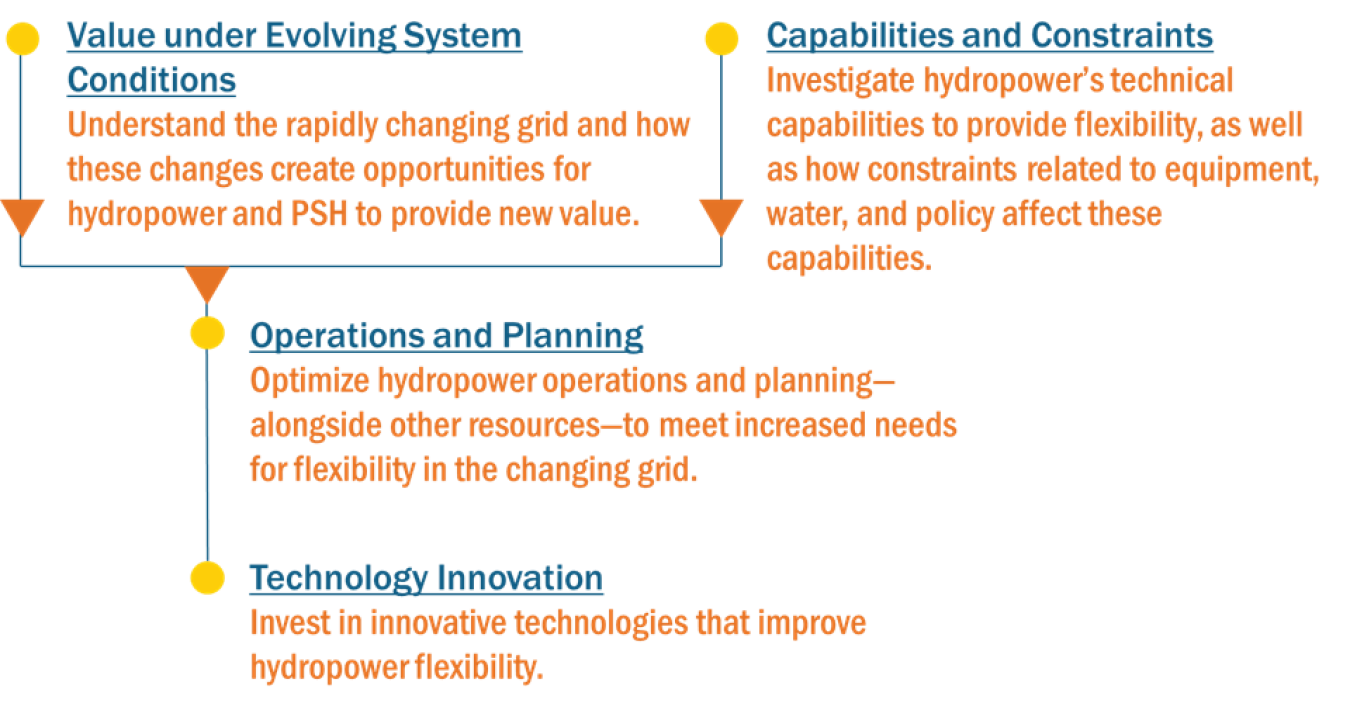
In addition, a number of technology development projects under HydroWIRES have identified new approaches to designing and configuring PSH projects while reducing capital costs and reducing potential environmental impacts. For example, Obermeyer’s design would reduce excavation costs by eliminating the underground powerhouse, and Oak Ridge National Laboratory (ORNL) put forward a modular configuration of PSH that uses pressurized air in tanks to increase the effective head. Additionally, a PSH-focused prize solicited new ideas to reduce the total time to commissioning projects, resulting in awards to investigate new approaches to modularity, civil works, and materials. Other work seeks to increase the grid service provision of run-of-river hydropower by coupling it with other energy storage technologies such as batteries and flywheels. Further details about these foundational efforts are provided in the project descriptions in this section.
To ensure HydroWIRES research is informed by industry input and expertise, WPTO has also released a draft HydroWIRES Research Roadmap in March 2020 for public comment. This roadmap describes the motivating challenges and strategic goals of the HydroWIRES Initiative, as well as future research plans. A range of stakeholders provided detailed feedback on the roadmap, generally affirming its focus and approach. After incorporating these comments, the final roadmap is expected to be published in 2021.
Finally, informed by the roadmap development and associated stakeholder feedback, several new HydroWIRES efforts have kicked off in the past year. For example, in October 2020, WPTO released a NOTA—the second time the office has publicly issued competitive opportunities to apply for technical assistance. Through the notice, WPTO will arm hydropower decision makers—such as hydropower operators, utilities, and system operators—with national lab expertise and capabilities to address current challenges and capture new opportunities for their systems. Experts from the national labs will provide specialized technical assistance on topics such as opportunities to participate in new markets and hydropower representation in integrated resource planning. Through these partnerships, the labs will refine draft methodology, models, and tools and make them available to the public and the hydropower community at large. WPTO will publish selections and progress updates in the coming year.


